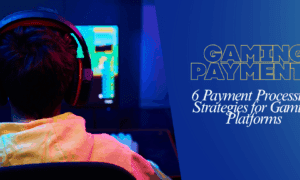Somewhere between your third rage-quit and your fifteenth loot box, a quiet revolution has been brewing. You may not see it, but it sees you. Watches you. Learns your patterns. No, this isn’t a trailer for some dystopian sci-fi thriller. It’s your favorite game’s AI – watching, learning, and shaping your experience pixel by pixel.
Welcome to the world of AI-driven personalization in online gaming, where machine learning models know what you want before you even do. Where your game morphs to your mood, your playstyle, your cravings for dopamine hits disguised as rare skins. Whether you’re grinding in a casual puzzle app or waging psychological warfare in competitive arenas, AI is behind the curtain – pulling the strings, stacking the deck, and sometimes even saving you from your own worst impulses.
Why Static Games Are Dying Faster Than NPCs in a Speedrun
Let’s face it: cookie-cutter game design is so 2012. Today’s players want more than generic fetch quests and boilerplate boss fights. We want games that get us.
And coders? They need us addicted. And so, enter personalization. AI-powered systems analyze data in real-time – your every click, pause, and early rage quit – to dynamically modify gameplay. This isn’t merely good design; this is survival in an ecosystem where attention spans are shorter than a battle royale match.
Take Dynamic Difficulty Adjustment (DDA). It ensures that whether you’re a button-mashing beginner or a frame-perfect god, the game calibrates the challenge just right. Too easy and you’re bored. Too hard and you’re Googling “poker hacks” faster than a speedrunner skips dialogue.
Games like Left 4 Dead, Resident Evil 4, and Red Dead Redemption 2 have all flirted with AI systems that adjust enemy behavior, resource drops, or pacing. The goal? Keep you in flow. Keep you playing. Keep you spending.
Recommendation Engines: Netflix Vibes, Now With More Loot
Ever wondered why your Steam front page seems psychic? Or why your poker app just happens to recommend that $4.99 power-up after a frustrating hand? That’s AI doing what it does best: selling you dopamine. Algorithms trained on thousands of behavioral signals – session length, tilt frequency, even time of day – serve you microtransactions you didn’t even know you wanted.
From collaborative filtering (players like you loved this flaming sword!) to hybrid recommendation systems that combine content data with your purchase history, games are becoming finely tuned sales funnels.
You know what else is becoming finely tuned? The ethical tightrope. When poker cheat algorithms know exactly when you’re vulnerable to spending and hit you with a limited-time offer… well, it’s genius and manipulative in equal measure. The sophistication of these behavioral analysis systems rivals those used in competitive strategy games, where understanding player psychology and decision-making patterns becomes crucial. For those curious about the technical depth behind such AI systems, exploring detailed breakdowns of how advanced game AI actually works can provide fascinating insights into the algorithms that power modern gaming experiences.
Narratives That Remember You
Old-school RPGs had branching paths. Modern AI systems have neural networks that build dynamic narratives so personalized it’s like the game’s writing fanfiction about you in real time.
Games are experimenting with procedural content generation driven by your decisions, morality, and playstyle. Imagine NPCs that remember you botched their side quest and now avoid eye contact. Or entire story arcs unlocked because you tend to favor stealth over brute force.
This kind of personalization isn’t just aesthetic – it makes players feel seen. And when players feel seen, they stay. And when they stay, they spend. Not to get all cynical, but let’s just say the algorithms aren’t writing Shakespeare out of the goodness of their neural hearts.
Personalization Meets Monetization: Poker Machines in Disguise?
Let’s talk brass tacks: personalized monetization. If your poker app tailors offers based on your win streak or tilt level, congratulations – you’re being nudged by a revenue-optimized machine. Casinos have known this trick for decades. Now it’s just got a fancier UI and a “daily rewards” spinner.
Some platforms adjust in-game prices dynamically. Spend more? You’ll get VIP offers. Spend less? You’ll get discounts. It’s not just personalization – it’s player modeling with predictive analytics so advanced it makes a poker cheat sheet look like a crayon drawing.
And unease is growing. Not just about privacy, but about how these systems could exploit psychological vulnerabilities. Especially for young gamers or vulnerable gamers. If your game knows you’re going to binge – and it offers you a discount – where’s the boundary between fine design and exploitative dark pattern?
Ethics, AI, and the Ghost in Your Machine
There is baggage that accompanies all this enchantment in AI. The kind that cannot be fixed in v1.2. Think about data privacy, algorithmic bias, and emotional manipulation in the guise of engagement loops.
What if your game-playing data reveals more about you than you might have wanted to communicate – e.g., your mood, income, or psychometric type? Or when personalization serves to reinforce stereotypes or nudge you into echo chambers of play?
There is pushback from some studios with moral AI design principles – limiting late-night monetization requests, enforcing transparency, and crafting opt-in consent levels. But come on: in a hit-driven industry, ethics will usually be secondary to engagement metrics.
What’s Next? Hyperpersonalization, Generative Quests, and Maybe Some Sanity
The future isn’t just personal. It’s hyperpersonal. Think generative AI crafting side quests on the fly. NPCs with memory. Matchmaking that adapts not just to skill level but play mood. AI that predicts churn before you’ve even decided to uninstall.
We’re already seeing neural networks write dialogue, procedural engines generate custom maps, and reinforcement learning tweak gameplay rhythm. The boundary between player and system is blurring.
But so is the boundary between enhancement and exploitation. When AI knows your tells better than your poker buddies do, who’s really playing who?
Final Thoughts: It’s Personal Now
AI-driven personalization is the best thing to happen to games since LAN parties – and also the creepiest. It makes games richer, deeper, more engaging. But it also walks the razor’s edge between service and surveillance.
So next time your poker app recommends a power-up right after a losing streak, ask yourself: was it luck… or the algorithm whispering in your ear?
And maybe keep that poker hacks forum bookmarked. Just in case the bots start bluffing better than you do.



































